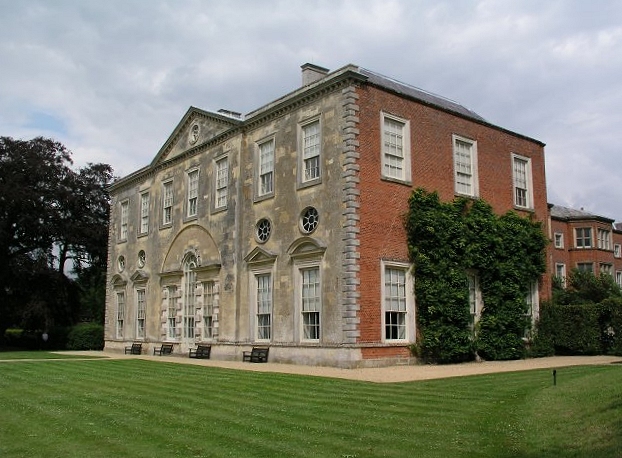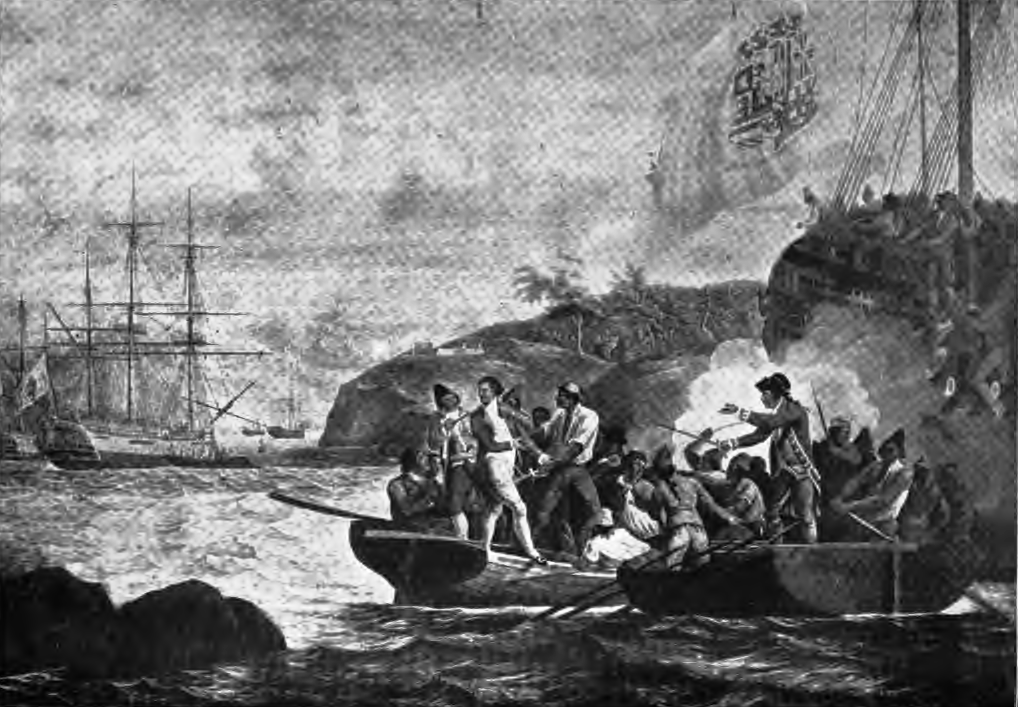|
John Barker Church
John Barker Church, John Carter, (October 30, 1748 – April 27, 1818) was an English born businessman and supplier of the Continental Army during the American Revolution. He returned to England after the Revolutionary War and served in the House of Commons of Great Britain, House of Commons from 1790 until 1796. He was known for his marriage to Angelica Schuyler Church, of the prominent American Schuyler family, and being the brother-in-law of Alexander Hamilton, who died in a duel in 1804 with Aaron Burr, with whom Church had also had a duel in 1799. Early life John Barker Church was born on October 30, 1748, in Lowestoft in eastern England, the son of Richard Church (1697–1774) of Great Yarmouth, Norfolk by Elizabeth Barker (1701–1800), daughter of John Barker. Career Church was set up in business in London by his mother's brother, a wealthy uncle named John Barker who was a director of the London Assurance Company. It was reported that speculation on the stock exchange a ... [...More Info...] [...Related Items...] OR: [Wikipedia] [Google] [Baidu] |
Wendover (UK Parliament Constituency)
Wendover was a borough constituency of the House of Commons of the Parliament of England then of the Parliament of Great Britain from 1707 to 1800 and of the Parliament of the United Kingdom from 1801 to 1832. It was based on the borough of Wendover, was represented by two Members of Parliament, and was considered a classic example of a pocket borough. History Wendover first sent members to Parliament in 1300, but after 1308, elected no burgesses for more than 300 years. However, in the 17th century a solicitor named William Hakewill, of Lincoln's Inn, rediscovered ancient writs confirming that Amersham, Great Marlow, and Wendover had all sent members to Parliament in the past, and succeeded in re-establishing their privileges (despite the opposition of James I), so that they resumed electing members from the Parliament of 1624. Hakewill himself was elected for Amersham in 1624. The borough consisted of most of the market town of Wendover in Buckinghamshire. It was one of th ... [...More Info...] [...Related Items...] OR: [Wikipedia] [Google] [Baidu] |
Spain
, image_flag = Bandera de España.svg , image_coat = Escudo de España (mazonado).svg , national_motto = ''Plus ultra'' (Latin)(English: "Further Beyond") , national_anthem = (English: "Royal March") , image_map = , map_caption = , image_map2 = , capital = Madrid , coordinates = , largest_city = Madrid , languages_type = Official language , languages = Spanish language, Spanish , ethnic_groups = , ethnic_groups_year = , ethnic_groups_ref = , religion = , religion_ref = , religion_year = 2020 , demonym = , government_type = Unitary state, Unitary Parliamentary system, parliamentary constitutional monarchy , leader_title1 = Monarchy of Spain, Monarch , leader_name1 = Felipe VI , leader_title2 = Prime Minister of Spain ... [...More Info...] [...Related Items...] OR: [Wikipedia] [Google] [Baidu] |
Kingdom Of Great Britain
The Kingdom of Great Britain (officially Great Britain) was a Sovereign state, sovereign country in Western Europe from 1 May 1707 to the end of 31 December 1800. The state was created by the 1706 Treaty of Union and ratified by the Acts of Union 1707, which united the kingdoms of Kingdom of England, England (which included Wales) and Kingdom of Scotland, Scotland to form a single kingdom encompassing the whole island of Great Britain and its outlying islands, with the exception of the Isle of Man and the Channel Islands. The unitary state was governed by a single Parliament of Great Britain, parliament at the Palace of Westminster, but distinct legal systems – English law and Scots law – remained in use. The formerly separate kingdoms had been in personal union since the 1603 "Union of the Crowns" when James VI of Scotland became King of England and King of Ireland. Since James's reign, who had been the first to refer to himself as "king of Great Britain", a political un ... [...More Info...] [...Related Items...] OR: [Wikipedia] [Google] [Baidu] |
Nootka Crisis
The Nootka Crisis, also known as the Spanish Armament, was an international incident and political dispute between the Nuu-chah-nulth Nation, the Spanish Empire, the Kingdom of Great Britain, and the fledgling United States of America triggered by a series of events revolving around sovereignty claims and rights of navigation and trade. It took place during the summer of 1789 at the Spanish outpost Santa Cruz de Nuca, in Nootka Sound on Vancouver Island in present-day British Columbia, Canada. The commander of the outpost, Jose Esteban Martínez, seized some British commercial ships which had come for the maritime fur trade and to build a permanent post at Nootka Sound. Public outcry in Britain led to the mobilization of the Royal Navy, and the possibility of war. Both sides called upon allies, the Dutch joined the side of Britain; Spain mobilized their navy and her key ally France also mobilized theirs, but the latter soon announced they would not go to war. Without French help ... [...More Info...] [...Related Items...] OR: [Wikipedia] [Google] [Baidu] |
Member Of Parliament
A member of parliament (MP) is the representative in parliament of the people who live in their electoral district. In many countries with bicameral parliaments, this term refers only to members of the lower house since upper house members often have a different title. The terms congressman/congresswoman or deputy are equivalent terms used in other jurisdictions. The term parliamentarian is also sometimes used for members of parliament, but this may also be used to refer to unelected government officials with specific roles in a parliament and other expert advisers on parliamentary procedure such as the Senate Parliamentarian in the United States. The term is also used to the characteristic of performing the duties of a member of a legislature, for example: "The two party leaders often disagreed on issues, but both were excellent parliamentarians and cooperated to get many good things done." Members of parliament typically form parliamentary groups, sometimes called caucuse ... [...More Info...] [...Related Items...] OR: [Wikipedia] [Google] [Baidu] |
Wendover
Wendover is a market town and civil parish at the foot of the Chiltern Hills in Buckinghamshire, England. It is situated at the point where the main road across the Chilterns between London and Aylesbury intersects with the once important road along the foot of the Chilterns. The town is some north west of London and south east of Aylesbury, and is very popular with commuters working in London. The parish has an area of and had, at the time of the United Kingdom census, 2011, 2011 census, a population of 7,399. Outside the town of Wendover, the parish is mainly arable and also contains many hamlet (UK place), hamlets that nestle amongst the woodlands on the surrounding hills. Although Wendover has a weekly market, and has had a market charter since medieval times, many of its inhabitants identify it as a village, and the parish council does not describe itself as a town council. Etymology The name is of Common Brittonic, Brythonic Celtic origin. The first element, ''wen'' ... [...More Info...] [...Related Items...] OR: [Wikipedia] [Google] [Baidu] |
Claydon House
Claydon House is a English country house, country house in the Aylesbury Vale, Buckinghamshire, England, near the village of Middle Claydon. It was built between 1757 and 1771 and is now owned by the National Trust for Places of Historic Interest or Natural Beauty, National Trust. The house is a Listed building#England and Wales, listed Grade I on the National Heritage List for England, and its gardens are listed Grade II on the Register of Historic Parks and Gardens of special historic interest in England, Register of Historic Parks and Gardens. History Claydon has been the ancestral home of the Verney family since 1620.. The church of All Saints, Middle Claydon lies less than from the house and contains many memorials to the Verney family: among them Edmund Verney (Cavalier), Sir Edmund Verney, who was chief standard bearer to Charles I of England, King Charles I during the English Civil War. Sir Edmund was slain at the Battle of Edgehill on 23 October 1642, defending the sta ... [...More Info...] [...Related Items...] OR: [Wikipedia] [Google] [Baidu] |
Verney Family
The Verney family purchased the manor of Middle Claydon in Buckinghamshire, England, in the 1460s and still resides there today at the manor house known as Claydon House. This family had been seated previously at Fleetmarston in Buckinghamshire then at Pendley in Hertfordshire. It is not to be confused with the unrelated but also ancient and prominent Verney family of Compton Verney in Warwickshire. Early history The pedigree of Verney of Middle Claydon commences with Ralph de Verney ( fl. 1216–1223), but the fortunes of the family were made by Sir Ralph Verney (c. 1410–1478). After settling in Buckinghamshire in the 13th century, the family had purchased Middle Claydon by the 1460s and it was during this period that Sir Ralph Verney became Lord Mayor of London in 1465 and M.P. for the city in 1472. Sir Ralph Verney's eldest son, Sir John Verney, married Margaret, heiress of Sir Robert Whittingham of Pendley. In 1525, Sir Ralph Verney's fourth son, of the same name, married E ... [...More Info...] [...Related Items...] OR: [Wikipedia] [Google] [Baidu] |


.jpg)